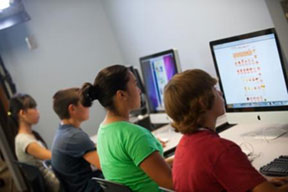 (NewsUSA) – According to the American Optometric Association’s (AOA) 2015 American Eye-Q survey, 41 percent of parents say their kids spend three or more hours per day using digital devices, and 66 percent of kids have their own smartphone or tablet.
(NewsUSA) – According to the American Optometric Association’s (AOA) 2015 American Eye-Q survey, 41 percent of parents say their kids spend three or more hours per day using digital devices, and 66 percent of kids have their own smartphone or tablet.
It’s clear children’s use of digital technology continues to be an integral part of their lives in both the classroom and at home, and it’s predicted that by 2028 — the year in which kids entering kindergarten this fall will graduate high school — many schools will rely heavily on computer simulations for instruction and will even incorporate virtual worlds into curriculu.
While these advances in the classroom may enhance learning, many digital devices are still relatively new, and the long-term effects on young eyes are not yet fully known. Most of today’s commonly-used devices give off high-energy, short-wavelength, blue and violet light, which may affect children’s vision and even prematurely age their eyes. Early research even shows that overexposure to this blue light could contribute to eye strain and discomfort and may lead to serious conditions later in life, such as age-related macular degeneration (AMD), which can cause blindness.
The first step in taking care of children’s eyes is for parents to schedule a comprehensive eye exam at an eye care center for children prior to the beginning of each school year to check eye health and vision. Children now have the benefit of annual comprehensive eye exams, thanks to the Pediatric Essential Health Benefit in the Affordable Care Act, through age 18. The AOA recommends children have an eye exam by
an optometrist soon after six months of age, again at age three and annually thereafter.
With so much time spent on digital devices, it is also more important than ever for parents to watch for signs of digital eye strain in children. Symptoms can include burning, itchy or tired eyes, headaches, fatigue, loss of focus, blurred vision, double vision or head and neck pain. To protect their eyes and vision while using digital devices, parents should encourage children to take frequent visual breaks by practicing the 20-20-20 rule: when using technology or doing near work, take a 20-second break, every 20 minutes and view something 20 feet away.
To find an optometrist in your area, or for additional information on children’s vision and the importance of back-to-school eye exams, please visit aoa.org.
Taking Care of Your Child’s Eyes in Today’s Digitally Dependent World

Featured Partner
Contributor
Font Size:

